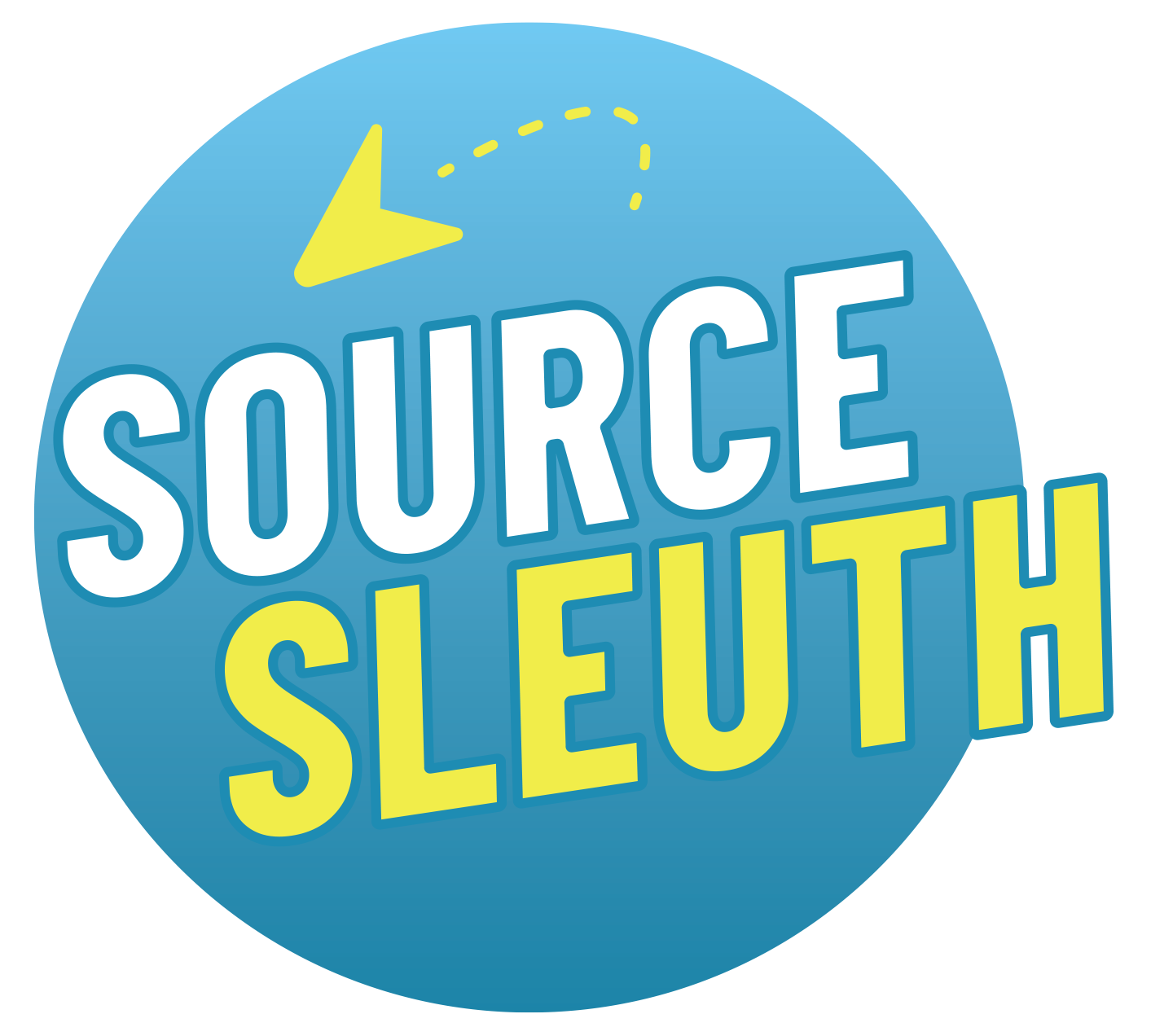Source Sleuth: Investigating Credible Sources About Beef
Students will discover why it is important to use credible sources, learn strategies for identifying credible sources, identify primary sources of information, and practice citing sources.

Background
Lesson Activities
Credits
Author
California Foundation for Agriculture in the Classroom
Standards
Texas Content Area Standards
-
Principles of Agriculture, Food, and Natural Resources: 130.2.c.1
The student demonstrates professional standards/employability skills as required by business and industry. The student is expected to:
- Principles of Agriculture, Food, and Natural Resources: 130.2.c.1.B: apply competencies related to resources, information, interpersonal skills, problem solving, critical thinking, and systems of operation in agriculture, food, and natural resources.
-
Principles of Agriculture, Food, and Natural Resources: 130.2.c.4
The student explains the historical, current, and future significance of the agriculture, food, and natural resources industry. The student is expected to:
- Principles of Agriculture, Food, and Natural Resources: 130.2.c.4.F: compare and contrast issues impacting agriculture, food, and natural resources such as biotechnology, employment, safety, environment, and animal welfare issues.
-
Principles of Agriculture, Food, and Natural Resources: 130.2.c.6
The student demonstrates appropriate personal and communication skills. The student is expected to:
- Principles of Agriculture, Food, and Natural Resources: 130.2.c.6.A: demonstrate written and oral communication skills appropriate for formal and informal situations such as prepared and extemporaneous presentations.
- Principles of Agriculture, Food, and Natural Resources: 130.2.c.6.B: demonstrate effective listening skills appropriate for formal and informal situations.
-
Principles of Agriculture, Food, and Natural Resources: 130.2.c.7
The student applies appropriate research methods to agriculture, food, and natural resources topics. The student is expected to:
- Principles of Agriculture, Food, and Natural Resources: 130.2.c.7.B: use a variety of resources for research and development.
-
Social Studies: 6.113.18.c.19
Social studies skills. The student applies critical-thinking skills to organize and use information acquired through established research methodologies from a variety of valid sources, including technology. The student is expected to:
- Social Studies: 6.113.18.c.19.C: organize and interpret information from outlines, reports, databases, and visuals, including graphs, charts, timelines, and maps
-
Science: 6.112.26.b.5
Recurring themes and concepts. The student understands that recurring themes and concepts provide a framework for making connections across disciplines. The student is expected to:
- Science: 6.112.26.b.5.G: analyze and explain how factors or conditions impact stability and change in objects, organisms, and systems.
-
Social Studies: 7.113.19.c.20
Social studies skills. The student applies critical-thinking skills to organize and use information acquired through established research methodologies from a variety of valid sources, including technology. The student is expected to:
- Social Studies: 7.113.19.c.20.C: organize and interpret information from outlines, reports, databases, and visuals, including graphs, charts, timelines, and maps
-
Social Studies: 8.113.20.c.29
Social studies skills. The student applies critical-thinking skills to organize and use information acquired through established research methodologies from a variety of valid sources, including technology. The student is expected to:
- Social Studies: 8.113.20.c.29.C: organize and interpret information from outlines, reports, databases, and visuals, including graphs, charts, timelines, and maps
-
Science: 7.112.27.b.5
Recurring themes and concepts. The student understands that recurring themes and concepts provide a framework for making connections across disciplines. The student is expected to:
- Science: 7.112.27.b.5.G: analyze and explain how factors or conditions impact stability and change in objects, organisms, and systems.
-
Science: 8.112.28.b.5
Recurring themes and concepts. The student understands that recurring themes and concepts provide a framework for making connections across disciplines. The student is expected to:
- Science: 8.112.28.b.5.G: analyze and explain how factors or conditions impact stability and change in objects, organisms, and systems.
-
ELA: 6.110.22.b.12
Inquiry and research: listening, speaking, reading, writing, and thinking using multiple texts. The student engages in both short-term and sustained recursive inquiry processes for a variety of purposes. The student is expected to:
- ELA: 6.110.22.b.12.D: identify and gather relevant information from a variety of sources
- ELA: 6.110.22.b.12.F: synthesize information from a variety of sources
- ELA: 6.110.22.b.12.H.i: examine sources for reliability, credibility, and bias
- ELA: 6.110.22.b.12.J: use an appropriate mode of delivery, whether written, oral, or multimodal, to present results
-
ELA: 7.110.23.b.12
Inquiry and research: listening, speaking, reading, writing, and thinking using multiple texts. The student engages in both short-term and sustained recursive inquiry processes for a variety of purposes. The student is expected to:
- ELA: 7.110.23.b.12.D: identify and gather relevant information from a variety of sources
- ELA: 7.110.23.b.12.F: synthesize information from a variety of sources
- ELA: 7.110.23.b.12.H.i: examine sources for reliability, credibility, and bias
- ELA: 7.110.23.b.12.J: use an appropriate mode of delivery, whether written, oral, or multimodal, to present results
-
ELA: 8.110.24.b.12
Inquiry and research: listening, speaking, reading, writing, and thinking using multiple texts. The student engages in both short-term and sustained recursive inquiry processes for a variety of purposes. The student is expected to:
- ELA: 8.110.24.b.12.D: identify and gather relevant information from a variety of sources
- ELA: 8.110.24.b.12.F: synthesize information from a variety of sources
- ELA: 8.110.24.b.12.H.i: examine sources for reliability, credibility, and bias, including omission
- ELA: 8.110.24.b.12.J: use an appropriate mode of delivery, whether written, oral, or multimodal, to present results
-
Technology Applications: 126.17.c.9
Digital citizenship--ethics and laws. The student recognizes and practices responsible, legal, and ethical behavior while using digital tools and resources. The student is expected to:
- Technology Applications: 126.17.c.9.D: describe how information can be exaggerated or misrepresented online
-
Technology Applications: 126.18.c.9
Digital citizenship--ethics and laws. The student recognizes and practices responsible, legal, and ethical behavior while using digital tools and resources. The student is expected to:
- Technology Applications: 126.18.c.9.D: evaluate how various types of media, including social media, and technology can be used to exaggerate and misrepresent information
-
Technology Applications: 126.19.c.9
Digital citizenship--ethics and laws. The student recognizes and practices responsible, legal, and ethical behavior while using digital tools and resources. The student is expected to:
- Technology Applications: 126.19.c.9.D: evaluate the bias of digital information sources, including websites
 For many consumers, it’s hard to determine whether an online source is credible or not. Since information on the internet can be created—or in some cases fabricated—by any user, it’s easy to present false information as fact. So, how can we find credible sources, especially when it pertains to the food we eat?
For many consumers, it’s hard to determine whether an online source is credible or not. Since information on the internet can be created—or in some cases fabricated—by any user, it’s easy to present false information as fact. So, how can we find credible sources, especially when it pertains to the food we eat?